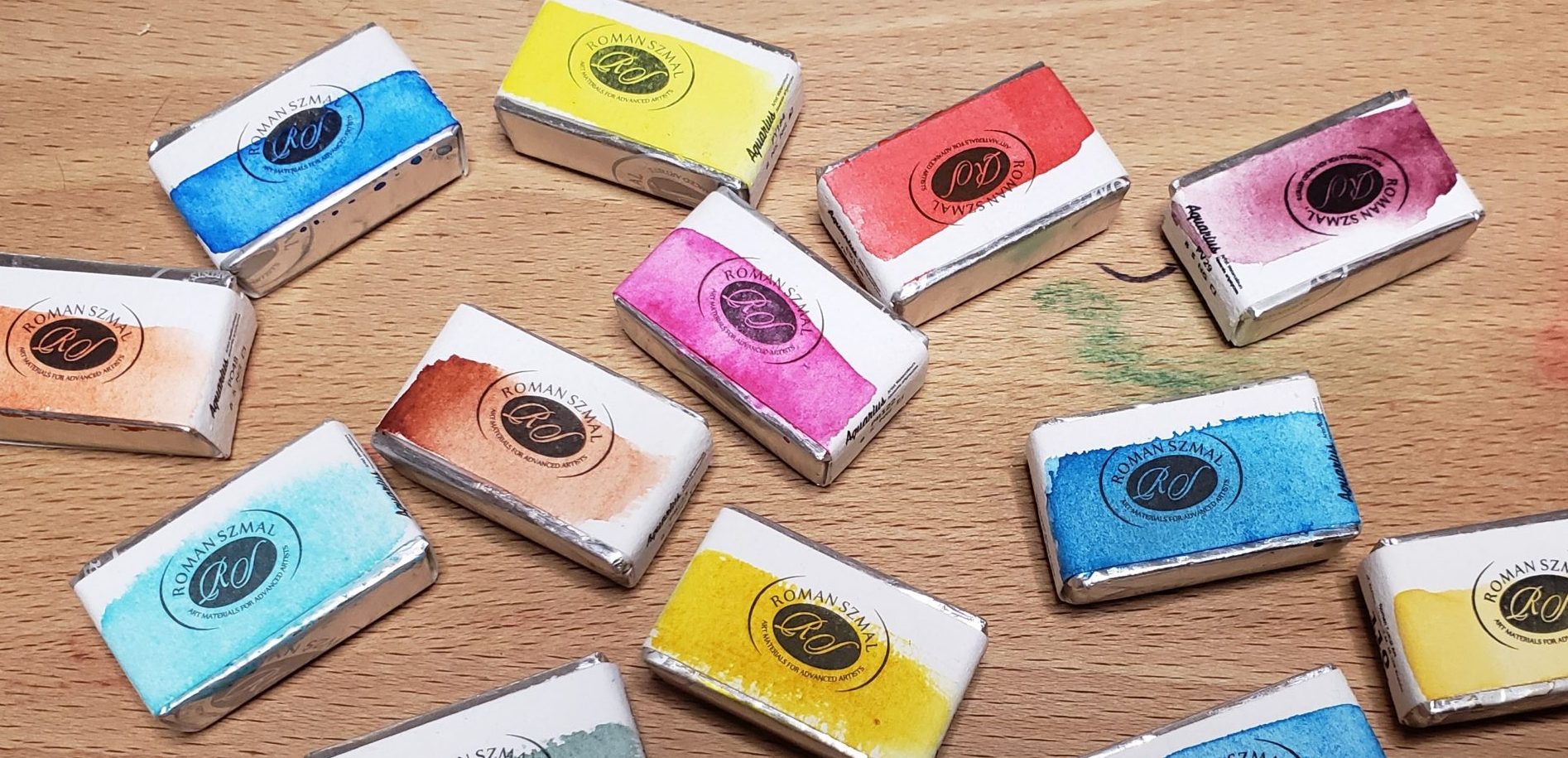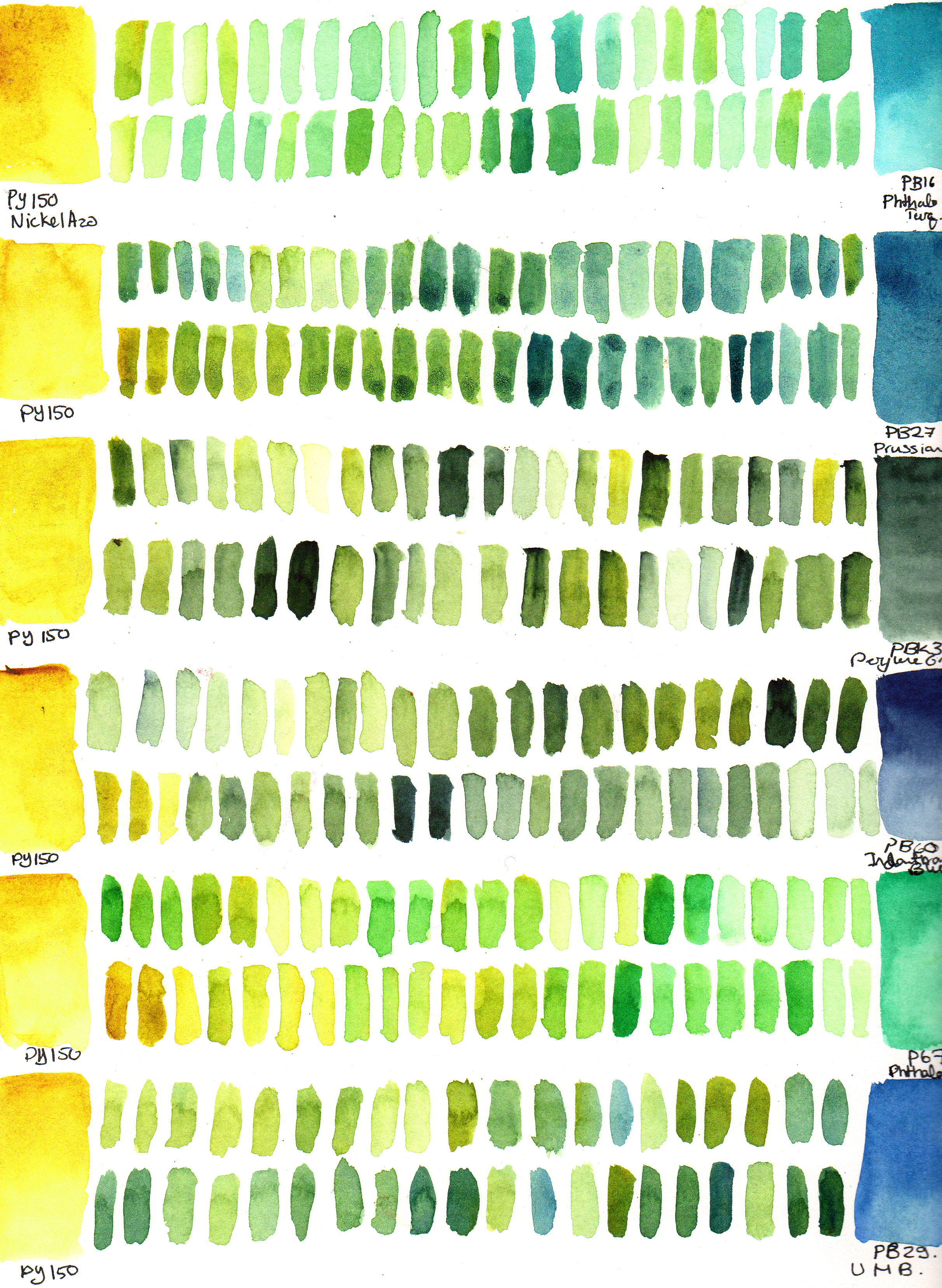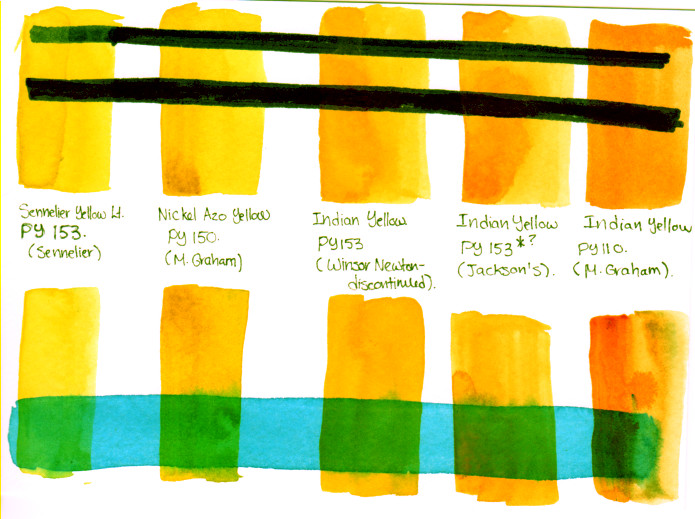The key to making paintings that look three-dimentional and pop off the page is building a large range of tonal values. In each painting, I aim to include a range from bright paper-white highlights through saturated body colour to deep, muted cool shadows. One of the techniques I use more and more is underpainting.
Shadows can be created in layers, mixed directly with the main body colour of a subject. In many cases, however, it can be useful to create shadows through underpainting. Underpainting is a technique in which the shadow areas are built up first. The body colour of the subject is painted in transparent layers above.
Properties of Shadows
One of the easiest ways build up tonal variation in watercolour is to use a thicker, more saturated mix of the same paint. However, areas in shadow are not only darker and more saturated than sunlit areas. Areas in shadow appear more muted and have a cooler tone than areas in light. To build up the most convincing shadows, it is useful to use a complementary colourand/or a dark-valued cooler tone in the shadow areas.
Complementary colours are opposites on the colour wheel. When you mix a colour with it’s complement in equal parts, you get a black or grey. By adding a complementary colour into your shadows you achieve both a darker tone.
Sunlight and many kinds of artificial light have a warm tone. This tone lightly tints the highlight and midtone areas a warmer colour. By contrast, shadow areas tend to be cooler. In watercolour, this effect is mimicked by mixing a cooler coloured paint into the shadow colours. I pick from a variety of deep blues, greens and purples to mix into my shadow mixes to cool down my shadow colours.
Why underpaint?
Underpainting techniques are useful in cases where mixing shadow colours risks creating a muddy look. For example, you can avoid muddy shadows in yellow flowers by underpainting your shadows in a cool, complementary purple mix. Then, you can apply varying levels of clear, bright yellow over all your petals and achieve a vibrant result with convincing shadows, without mixing any muddy mixes into your body colour.
Underpainting is a useful method when working with heavily granulating paints such as hematite. Building up shadows in layers over a heavily granulating paint disrupts the natural granulation patterns and results in a muddy, overworked look. I have recently learned that I can mix a complementary/dark shadow mix and underpaint some or all of my shadows when working with granulating paints. Then, I apply the granulating paints in 1-2 wet layers over the underpainting. This preserves the interesting texture of the granulating paint.
Underpainting can help create a more dramatic and graphical look to subjects of all colours.
Choosing an underpainting mix
You can use underpainting techniques with any paint. Earlier this year, I challenged myself to paint one of my Daily Leaf paintings using a cobalt teal underpainting. Cobalt teal is a granulating, light valued paint, which makes it challenging to paint in layers with. It is also an electric, nearly-neon teal colour that does not feel like a natural shadow colour. I was pretty happy with the results, but I likely won’t use this mix frequently.
I believe the best colours for underpainting are dark-valued, cool, staining colours. Dark-valued colours make it easier to build deep shadows. Staining colours are less likely to get picked up and moved around with subsequent layers. Cool colours help create contrast between cool shadows and warmer, sunlit areas.
IfI try to choose underpainting colours which I can use elsewhere in the painting. I use fewer colours in each painting to give a more cohesive look.
My favourite underpainting colours are a shadowy power couple of Perylene Green (PBk31) and Perylene Violet (PV29). These two deep, muted cool colours make great shadow colours for a variety of subjects, from green leaves to red and purpley fruit and flowers. Together, they mix into a cool deep black-blue violet, perfect for the deepest shadows in many botanical subjects. These colours are also ideal for underpainting because they are non-granulating, staining colours. However, I always choose underpainting colours that will be incorporated into my main colour mixes.
Step 1: Underpainting shadows
I used my perylene green and perylene violet mix for the underpainting on the mahonia leaf. I later used the same colours in the main body colours and details layers, mixed with a couple extra colours.
As a first step, I focus on building up the tonal variation. During this first underpainting step, I am not very concerned with matching colours. I adjust my colours when I build the body colour later. My main goal is to define which areas are in shadow and which areas are illuminated. At this point, I try to preserve a large amount of paper white.
I do try to build up contrast and variation by varying the saturation and balance of my mixes. For the midtone shadows in warmer areas, I used mainly perylene violet. In the cooler toned areas, I used mainly perylene green. In deeper shadow areas I used a more saturated mix of both.
However, it is not a problem if some of the colour transitions or tonal variations look a bit odd or wrong.
I applied about 2-3 layers of paint to get to the underpainting you see on the left.
Step 2: Building up body colour
Once I have underpainted the shadows, my next step is to block in the main body colours. In the Mahonia leaf I painted for Daily Leaf 114, I used Winsor and Newton Raw Sienna (PBr7) for the light brown/tan colour on most of the leaves, and more Perylene Violet (PV29) in the purple areas of the top leaves and stem.
I let the underpainted shadows of my subject do the work of varying the colour temperature, applying only a single paint or paint mix for each area of colour. I apply thicker, darker paint in the areas of shadow, and fade out my washes to clear water in areas of bright highlight. The underpainted shadows guide me to which areas are shadowed.
After two layers of blocking in body colours, I have a basic painting outline. The mahonia at the left still looks a little rough around the edges and doesn’t have any details, but already has a lot of depth and contrast. The main colours are also beginning to look lifelike.
Step 3: Adding detail
The final step in creating a beautiful underpainted botanical painting is adding the fine detail, texture and fine colour gradations of your subject.
I rushed through this step while painting this mahonia leaf, because I had a midnight deadline for my daily leaf challenge. Depending on what effect you are seeking, this step can be very short, or you could spend dozens of hours slowly drybrushing details.
For the reddish details in this mahonia leaf, I added Quinacridone Rose (PV19) to my palette. All the other detail colours are mixed from my underpainting/body colours Perylene Green, Perylene Violet and Raw Sienna.
For the greenish spots in the lower leaves, I mixed raw sienna with perylene green. I toned down the pink of the quinacridone rose with raw sienna as well. I also deepened and corrected the shadow tones, using mixes of my underpainting and body colours.
The finished effect is a painting that has a great deal of depth despite some complicated looking colours and patterns, which can tend to flatten illustrations.











What a nicely detailed article. I learned so much. Thanks for writing it and I look forward to reading more.
I tend have paper challenges when I do subsequent layers. Do you think hot press is better then cold press for this application?
Sorry for the delayed reply here – I think this is more likely to do with the quality of your paper than the finish. Hot press vs. cold press finish paper is a personal preference, I really like very smooth, hot press paper.
Look for 100% cotton paper, at least 140 lb (300 gsm) weight. Arches, Stonehenge Aqua, Fluid 100, Canson Heritage, Moulin du Roy are all good brands 🙂